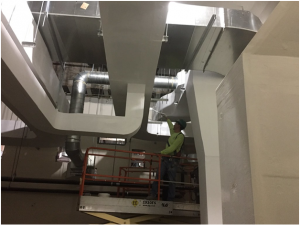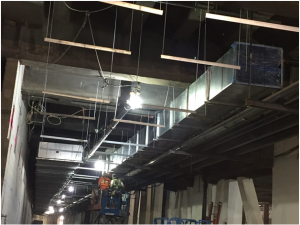There are a variety of materials used for ductwork, which is the system through which your ventilation is delivered. These materials must have strength and durability. Sheet metal used to be one of the few common ductwork materials; however, the range of materials has expanded in recent years.

The design of a building’s ductwork can be complex, as it is significant in the utility of the building in general. There are supply and return ducts, which branch out around the entire building. HVAC ducting (heating, ventilation and air conditioning) runs through space between a suspended ceiling and the roof of the building, extracting and supplying air at the right temperature and quality to the rooms below using fans or air handling units.
Available ductwork materials
The fiberglass duct board is great for square vents. It is made from compressed fiberglass board, insulated, easy to seal with adhesive tape, and easy to cut. It is mostly used along with existing ceilings or between floor joists and rafters.

Galvanized steel ductwork is incredibly strong and reliable and is available in spiral duct form in different lengths from suppliers such as https://www.dustspares.co.uk/ductwork-parts/galvanised-steel-spiral-duct.html. Although it is not flexible and is a little harder to insulate, galvanized steel is the most common material used in ductwork and is usually coated with zinc to prevent rust.
Non-metallic duct materials include plastic, polyester, and PVC. These are very flexible, fold like an accordion, have varying diameters, and can be good for awkward areas. The downside is that they are not as strong as metal and can tear easily.
Polyurethane is a strong insulated plastic that is shaped from panels into the ductwork.
Why does ductwork need to be of high quality?
Firstly, it is a matter of comfort. If your building is unevenly cooled, the pockets of different temperatures can be uncomfortable. This is a sign of bad ductwork.
The quality of your indoor air depends on the ductwork. If your ductwork has been poorly installed, air can both escape and get in through cracks and holes. This may mean leaking fumes or particles from appliances entering your airflow, meaning the quality of the air you are breathing is poor.
Energy-efficient ductwork is important to keep your energy bills down and prevent air loss; in fact, faulty ductwork can mean air loss of up to 30 percent.
